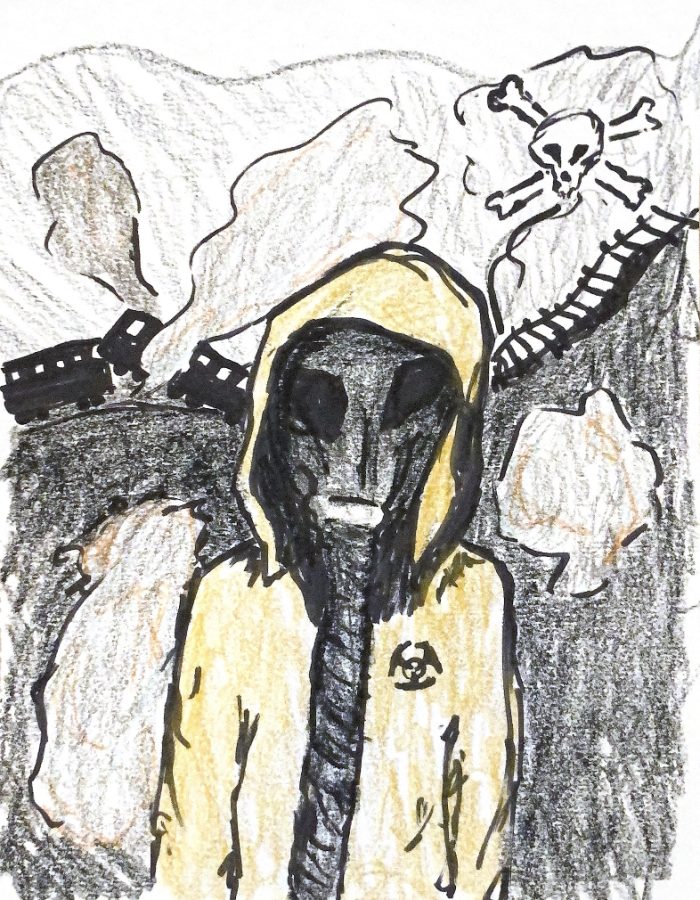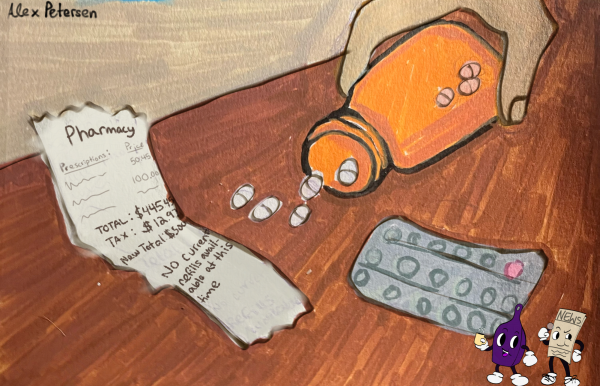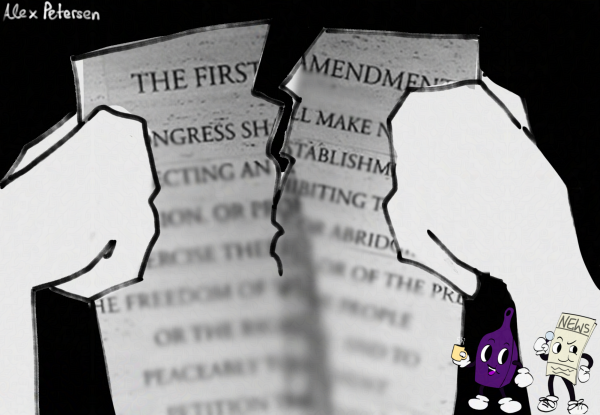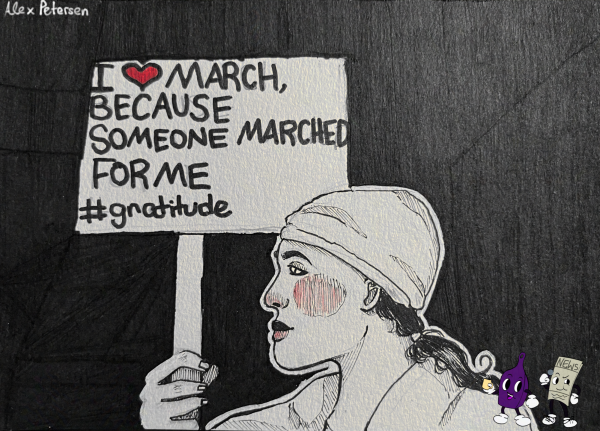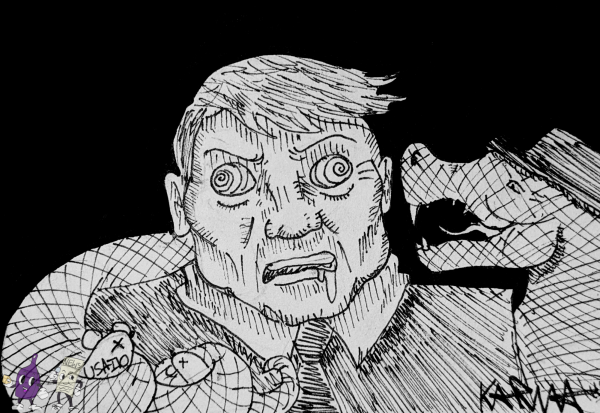IS CHERNOBYL GOING TO BE REPEATED?
Toxic chemicals are not a small matter. Radiation affected thousands of people after Chernobyl. Will these train derailments cause similar effects?
A person in a gas mask stands front and center with a train wreck and toxic chemicals behind them.
On April 2nd, a train derailed just across the river from Quinn’s Hot Springs in Paradise, Montana. A total of 25 cars fell from the tracks and spilled its contents into the Clark Fork river. However this time, unlike most of the trains that have derailed recently, it released no toxins into the atmosphere. Instead, hundreds of boxes of Coors and Blue Moon beer spilled all over the hillside and into the water below. Some people were celebrating, as this picture from The Missoulian shows a group of fishermen taking beer from the wreck. But as much as this train derailment seems rather lighthearted to some people, it raises a question: why are so many trains derailing in recent months?
One of the biggest news events in the United States within the past few months was the train derailment in East Palestine, Ohio. The wreck happened on February 3nd, 2023, and spilled tons of harmful chemicals into the soil and water systems and the atmosphere. The Spartan Scoop wrote a feature on this event that goes into more detail here. This tragedy became big in the news because it raised a large concern over the health of people in the area, and the affects all of the chemicals would have on the environment. Some news sites were calling it Ohio’s own “Chernobyl”.
A lot of train derailments happen due to mechanical errors of the train tracks. In past years, this was the leading cause of train derailments or wrecks happening. This is classified as human error. When train tracks are not maintained to be as safe as possible, they break, and cause these deadly disasters to happen.
This tragedy became
big in the news
because it raised
a large concern over
the health of people
in the area…
During the end of November to December of 2022, the House passed legislation that Biden signed into effect that would make a railroad strike illegal. For months, railroad workers had been getting upset over their lack of sick paid leave. When people have less opportunities to stay home, there is the possibility of getting overworked. And being overworked can lead to mistakes in maintenance or lack of regulation in general. This could explain the reason behind why so many of these trains are derailing. Is it for sure the answer? No, but some might say it’s strange that all of this is happening so shortly after. Of the 12 railroad unions, 8 ratified the bill.
When talking about global warming and climate change, it’s important to take everything into account. Not all of these, but some disasters like this can affect the environment. When oil spills take place in our oceans and water systems, they kill hundreds of sea animals, and negatively impact beaches and the health of fauna underneath the water. Spilling harmful chemicals into the area is no different. Dead fish were washing up on river shores near to the derailment in East Palestine. People were breathing in those chemicals. And even the Center of Disease Control (CDC) admitted that nearly half of their research team members fell ill after investigating the toxic train accident. Large events like these keep releasing harmful chemicals and toxins into the air. It’s important to remember how history can show the devastation of bad accidents.
On April 26th, 1986, one of the world’s most well-known accidents took place. It is known as the deadliest civil nuclear accident the world has seen. Near Pripyat, Ukraine, which was still under Soviet Union control at the time, the Chernobyl nuclear power plant went up in flames. More specifically, of the four large reactors that generated energy, the fourth one malfunctioned. The reactors were more specifically known as RBMK-type reactors. A safety test was done to test the ability of steam turbines to power emergency feed-water pumps in the event of a coolant leak or a loss of external power. This meant that essentially, if the power plant lost power or coolant, there would be another way to cool down the reactors and keep from an explosion. During this test, though, Reactor 4’s power output dropped to near-zero on accident. In an attempt to get it back up to normal numbers, human operators removed some of the control rods, which meant that the limits of the reactor could be exceeded. Once the test was completed, the reactor shutdown. And this was where a design flaw caused the accident. Reactivity in the reactor increased rapidly, and flash-steamed all of the coolant within the chambers. Because of this, reactivity further increased and the coolant heated up, which caused the reactor’s core to melt and the steam inside to explode. These explosions caused the core to rupture and the reactor building to blow up, which ended in a fire that lasted for 8 days.
Over a hundred workers got acute radiation sickness after responding to the scene, and around 30 people ended up dying because of the explosion or due to the after effects. Thousands of people developed thyroid cancer because of the radiation released into the atmosphere.
The disaster at Chernobyl was caused by two things: human error, and design flaws. These are seen in the recent train derailments, especially human error. No one person is perfect, but when a problem is not fixed, it’s bound to repeat itself more than once. Well over a thousand train derailments happen a year, but these bigger ones are gaining more traction because of the labor unions that were denied, and the severity of the accidents. Railroad workers have warned the public about this for years. Design flaws and errors in the RBMK reactors caused radiation to spread over a large portion of Europe, and to this day, the area surrounding Chernobyl (and the plant itself) are still considered deadly.
There’s no way to tell if train derailments will ever be as dangerous as Chernobyl. Because of how large the power plant was and the amount of radiation and sickness it spread, it’s most likely that no train accident will be as deadly. But whether or not they’re anything alike in severity, the chemicals getting spilled into the environment are still harmful. They’re already affecting everyone’s daily lives. People and wildlife are getting physically ill. So it’s important to understand that history tends to repeat itself.

“They’re making us think our thoughts are what we’re thinking…I think” -Patrick Star



